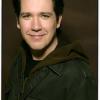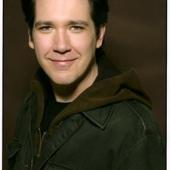Fringe blog (day 8): At Rarig Center
Editorial

What’s left?
Sure, plenty of shows still to be seen by us, reviewed by us. But where are the angles?
Herewith, a brief and reductive recap of my predecessors. Matthew Foster gave us a view from a former Fringe insider; Sara Ochs outlined rules for baby Fringers like herself and a People of Color count for each show she attended while making contact and conversation with strangers in line; Marya Hornbacher took us on a sectionally outlined rabbit hole trip through her Fringe day/night and refused to name names (I totally get it); Levi Weinhagen saw 7 shows in a row and somehow remained generous; H. Adam Harris grappled with his own views about what theater should be (high art mostly, right?), and came out finding joy and value in the Fringe; Ira Brooker searched for horror of the intentional variety; and Ricardo Vasquez held the Fringe up to comparison with video games.
I hope you read them all. There will be a quiz.
So what then will I bring?
I give you this, fellow Fringer: convenience. I will not take you downtown; paying for parking in Minneapolis is fucking stupid. The BLB is a charming venue but too far removed from the center of things. Traveling during the Fringe is for suckers. Put another way, leaving Rarig Center during the Fringe is for people markedly less lazy than I.
So then, with apologies to all the fine efforts taking place off campus today, Fringe Day 8, Rarig Center Only edition.
First I will remind you of something you already know: the Rarig Center is a place where by all rights, no art should ever be made. Cinder block, concrete, scarce natural light and the general look of something that ate the souls of innocents on its cruel rise to power, all these combine in this Brutalist mainstay. Why did architects hate people so much in the 70’s?
Still, the building buzzes with the good will, adrenaline and smiling anticipation of incipient performance. This is a major triumph, believe me.
But the shows. The shows!
First a dance piece called OH CHRIST/SABOTAGE out of Omaha. Its three pieces, the strongest of which is called “My Only Option was SABOTAGE”. The women of New Territory Dance command each other to “Bite,” and apples are consumed. “Mine Eyes Have Seen the Glory,” is sung at various points to martial rhythms. There’s a white guy doing spoken word into a mic. It could go horribly wrong but the strength of the dancers’ conviction saves the day.
The movement is aggressive and the piece plays with ideas of power and dominance. In each of the three pieces there is spoken text and this proves to be the weakest aspect of each, but the commitment of the dancers made me wish for theater that left its performers audibly catching their breath after it was over, as it was with this piece.
Next one half of a Shakespeare double bill called WHAT YOU WILL. I know everyone involved and even donated cash to its Kickstarter, so objectivity is out the window before lights up. It’s like attending the talent show at a family reunion, except I don’t have complicated, wounded relationships with any of them. Well, maybe Clarence Wethern.
What You Will takes on the servants’/clowns’ stories from Twelfth Night. The concept is a nifty solution to the problem of how to bring Shakespeare to the Fringe. I’m sure it helps to know a bit about the plot of the whole play before seeing this piece, but the relationships are clear and the world of the play is neatly evoked with an island soundscape and music choices that keep things light when they need to be. There are no false moves from this seasoned cast, and Terry Hempleman’s direction is inventive and delightful.
Comedy is hard and Shakespearean comedy is just about impossible, but in the hands of pros who aren’t afraid to give the darker side of the material its due too, it still works. It’s classic.
Then KITTY KITTY KITTY. I don’t say this often or lightly, but this is a dirty play.
The tale of a scientist who clones a suicidal cat and the love that follows, it is also funny and tenderhearted and sad. There are handjobs and hurt feelings and intellectual awakenings. This is precisely the kind of show I want to see at the Fringe – snappy and light and not without something on its mind. Also, it wasn’t written for the festival. Which means it’s been through all the necessary stages of development and the artists who come to work on it never have to wonder, “Should we change this; Is this how it should go; Ought we add some dialogue here to punch it up?” The answer is no. That sort of finite boundary gives a company the freedom to dig in and make the thing work as is.
Loudmouth Collective does just that. Bullseye.
Finally, my energy seriously waning, I went to MIXTAPE: TRUE STORIES TOLD. It employs the simplest of conceits: Five storytellers (two of whom double as musicians for between story diversion) sit in chairs and share bits of their lives with us. I was utterly charmed. Each teller has a relaxed, open presence and makes effortlessly warm connection with us in the audience. Universal stories about family and loss and adolescence and the-way-I-wish-my-life-had-been had me leaning in and falling a little in love with these generous folks.
The night was a complete success and in that shitty old building I was dealt a perfect Fringe hand: dance, classic theater, contemporary comedy and storytelling. I was just a Scrimshaw Brother shy of Fringe full house.
Adia Morris, you’re up. Bring it.




